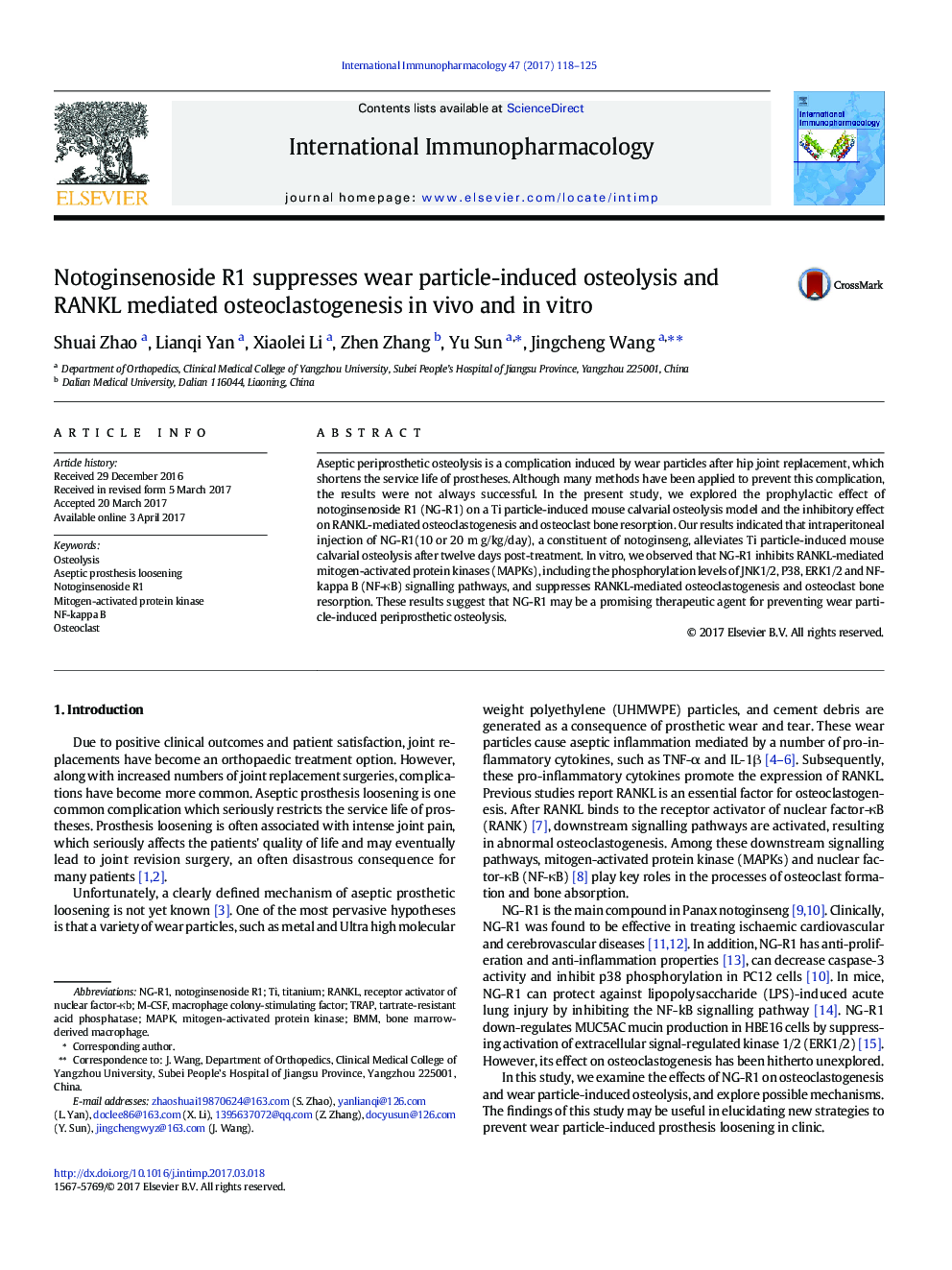| Article ID | Journal | Published Year | Pages | File Type |
|---|---|---|---|---|
| 5555501 | International Immunopharmacology | 2017 | 8 Pages |
â¢We investigated the effect of notoginsenoside R1 on suppressing wear particle-induced osteolysis in a mouse calvarial model.â¢In vitro, notoginsenoside R1 can suppress RANKL-induced osteoclast formation, bone resorption, and F-actin ring formation.â¢Further study indicated that notoginsenoside R1 could inhibit RANKL-mediated MAPKs and NF-κB signalling pathway.
Aseptic periprosthetic osteolysis is a complication induced by wear particles after hip joint replacement, which shortens the service life of prostheses. Although many methods have been applied to prevent this complication, the results were not always successful. In the present study, we explored the prophylactic effect of notoginsenoside R1 (NG-R1) on a Ti particle-induced mouse calvarial osteolysis model and the inhibitory effect on RANKL-mediated osteoclastogenesis and osteoclast bone resorption. Our results indicated that intraperitoneal injection of NG-R1(10 or 20 m g/kg/day), a constituent of notoginseng, alleviates Ti particle-induced mouse calvarial osteolysis after twelve days post-treatment. In vitro, we observed that NG-R1 inhibits RANKL-mediated mitogen-activated protein kinases (MAPKs), including the phosphorylation levels of JNK1/2, P38, ERK1/2 and NF-kappa B (NF-κB) signalling pathways, and suppresses RANKL-mediated osteoclastogenesis and osteoclast bone resorption. These results suggest that NG-R1 may be a promising therapeutic agent for preventing wear particle-induced periprosthetic osteolysis.
